► Frontera name returns for new compact SUV
► Replacement for the woeful Vauxhall Crossland
► Mild-hybrid, seven-seater and great price
Of all the badges Vauxhall could have revived for its new compact SUV, you’d think the Frontera nameplate would have been pretty close to the bottom of the pile, right? There’s surely richer heritage to rely on than its long-forgotten attempt at a 4×4 in the late ‘90s and early nougties.
Well clearly its naming department was having a creative block the day Frontera was decided as the name for its new compact budget SUV. It’s the replacement for the truly rubbish Vauxhall Crossland – a car that I rank in the top five worst cars I’ve ever driven. Things can only get better then, surely?
At a glance
Pros: A big car for not a lot of money, spacious interior, comfortable ride
Cons: Unrefined hybrid, slow gearbox, the Frontera EV is the better car
What’s new?
The Frontera sits between the Mokka and the new Grandland in Vauxhall’s refreshed SUV line-up, and the key talking point is really the EV version – covered separately in our Vauxhall Frontera Electric review. Why? Well, because of its pricing, as both the EV and mild-hybrid reviewed here start from £23,495, and it’s the first EV to achieve genuine list price parity without discounting. It’s quite a momentous moment in the history of EVs, and I don’t say that lightly.
Even if the subject itself is less momentous to behold – it’s a compact crossover built on Stellantis’ budget platform (my words, not theirs), with underpinnings that started out as Citroens in India and South America. You’ll find the same platform on the new Citroen C3 and forthcoming Citroen C3 Aircross, too, and it’s the base of the new Fiat Grande Panda, too.
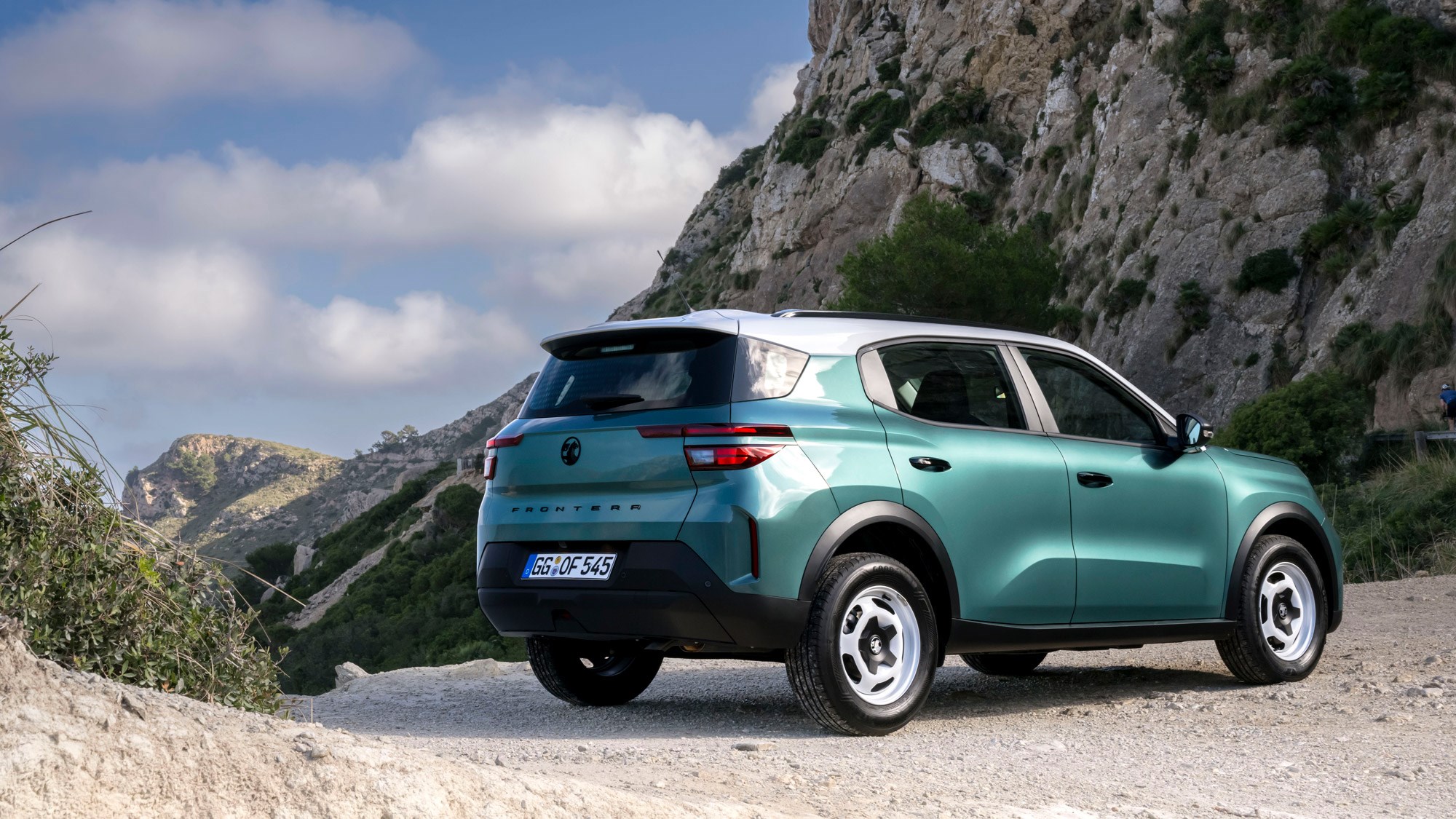
But the advantage to this is principally price, as while the Frontera is a noticeably larger car than the Mokka, it undercuts it on price, essentially making Vauxhall’s smallest crossover somewhat defunct – on paper, at least. You can even get it with seven seats as an option, for maximum family car credentials.
What are the specs?
While the electric Frontera is the talking point, it will be this mild-hybrid model that will do the numbers. Vauxhall expects it to account for two-thirds of sales.
It uses the same 48-volt 1.2-litre turbocharged petrol that’s doing the rounds in most current Stellantis models, from a Vauxhall Corsa to the large seven-seat Peugeot 5008. Drive is delivered to the front wheels via a six-speed automatic gearbox.
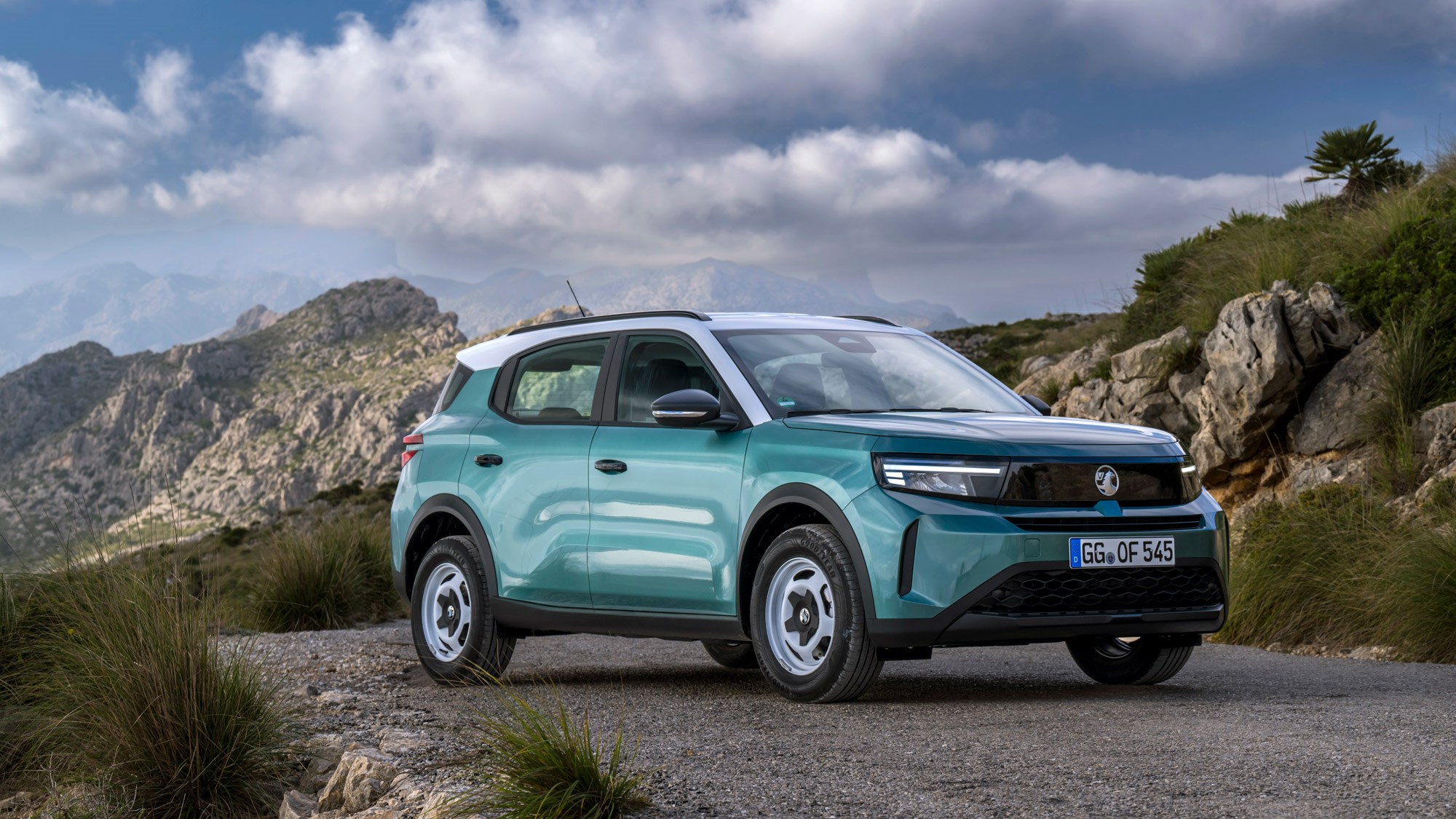
It’s available with two outputs, with the entry-level model serving up 99bhp and 151lb ft of torque, allowing for a 11.0 second 0-62mph time and 112mph top speed. So far we’ve only been driven the top-spec mild-hybrid model, which puts out 134bhp and 170lb ft torque. It drops the 0-62mph time to 9.0 seconds, and you’ll squeeze 118mph out of it – supposedly.
Running costs on paper are good, with Vauxhall claiming 53.3mpg and 111g/km CO2 emissions, though the figures might be a struggle to achieve in the real world. We averaged just 37mpg on the hilly Mallorcan test drive, admittedly not representative of the short urban journeys that most Fronteras will be used for.
How does it drive?
Without beating around the bush, the electric Frontera drives better than this mild hybrid. It’s smoother, quieter and surprisingly has less body roll – likely down to the electric model’s lower centre of gravity, with the battery positioned low to the floor. So despite being around 150kg lighter, the mild-hybrid model tilts more into a corner, though still not as much as you might expect a car of this size to. It’s also a significant improvement over the dire Crossland.
The steering is slow and plenty of hand shuffling will be needed for a tighter corner, but this isn’t a car designed to be hurried along. Instead, relish in its comfort, something it’s very good at – no surprises given this is a platform shared with Citroens. You can barrel it over a speed bump at quite a pace and it’s compressed well, with no harshness at all – it’s soft, just like the French firm’s models.
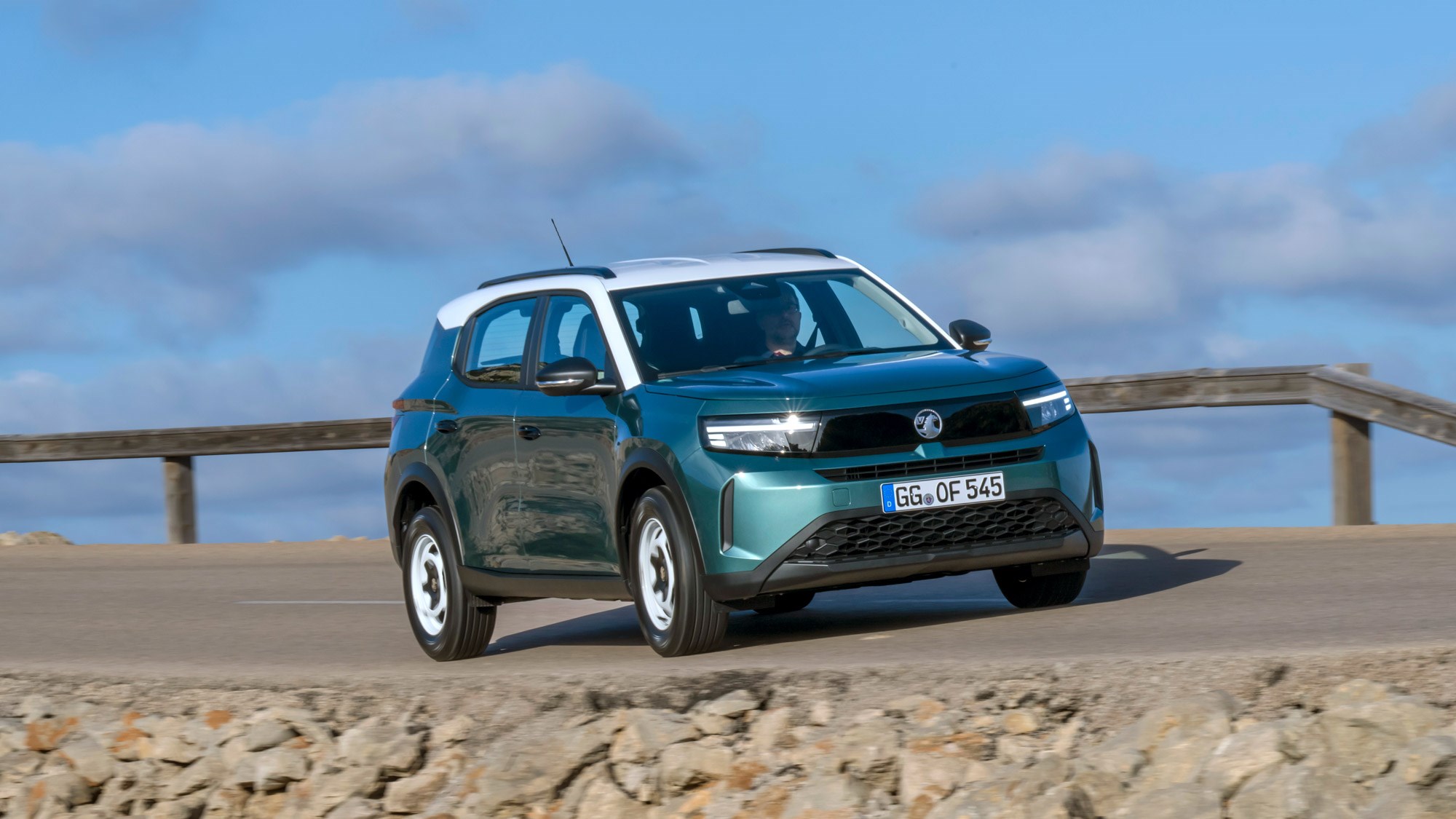
But refinement is not a strong point. The Frontera is a noisy car to drive, both in terms of wind and road noise and also its hybrid engine. Though the silent running of its electric motor is welcome, it’s always shortlived and the car vibrates quite significantly as the engine kicks into life. The engine itself isn’t bad, with brisk acceleration when it’s in the right gear. ‘When’ is the keyword here as the six-speed automatic is laggy and takes too long to change down. There’s no option of changing manual gear here manually, either. It’s a hybrid system that works better in other applications, with an almost night-and-day difference between it here and in a new Peugeot 3008, for example.
What’s it like inside?
At first glance, the Frontera looks better than its low price suggests.You’ve got smart seating upholstery, decorative silver trim and screens of a decent size. There’s a good mix of tech and real physical buttons for the climate control, always welcome here. But things aren’t so rosy when you begin touching and prodding, as that’s when the Frontera’s budget roots begin to appear. The cabin is awash with hard black plastic, and while this is a cheap car, a few bits of softer trim on the door cards, for example, could have easily improved it. The new MG ZS Hybrid and Dacia Duster, both of which undercut the Frontera, have smarter interiors.
But neither of those cars can compete with the Vauxhall for its spaciousness. It’s a much bigger car than the Crossland it replaces, and for all that car’s disappointments, we could never knock it for practicality. The Frontera’s big and boxy shape equates to plenty of headroom for all involved, with rear space particularly roomy for a car of this price. A taller adult will have no trouble sitting in the rear. The floor of this hybrid model is also lower than the EV’s, meaning you don’t feel quite so hemmed in.
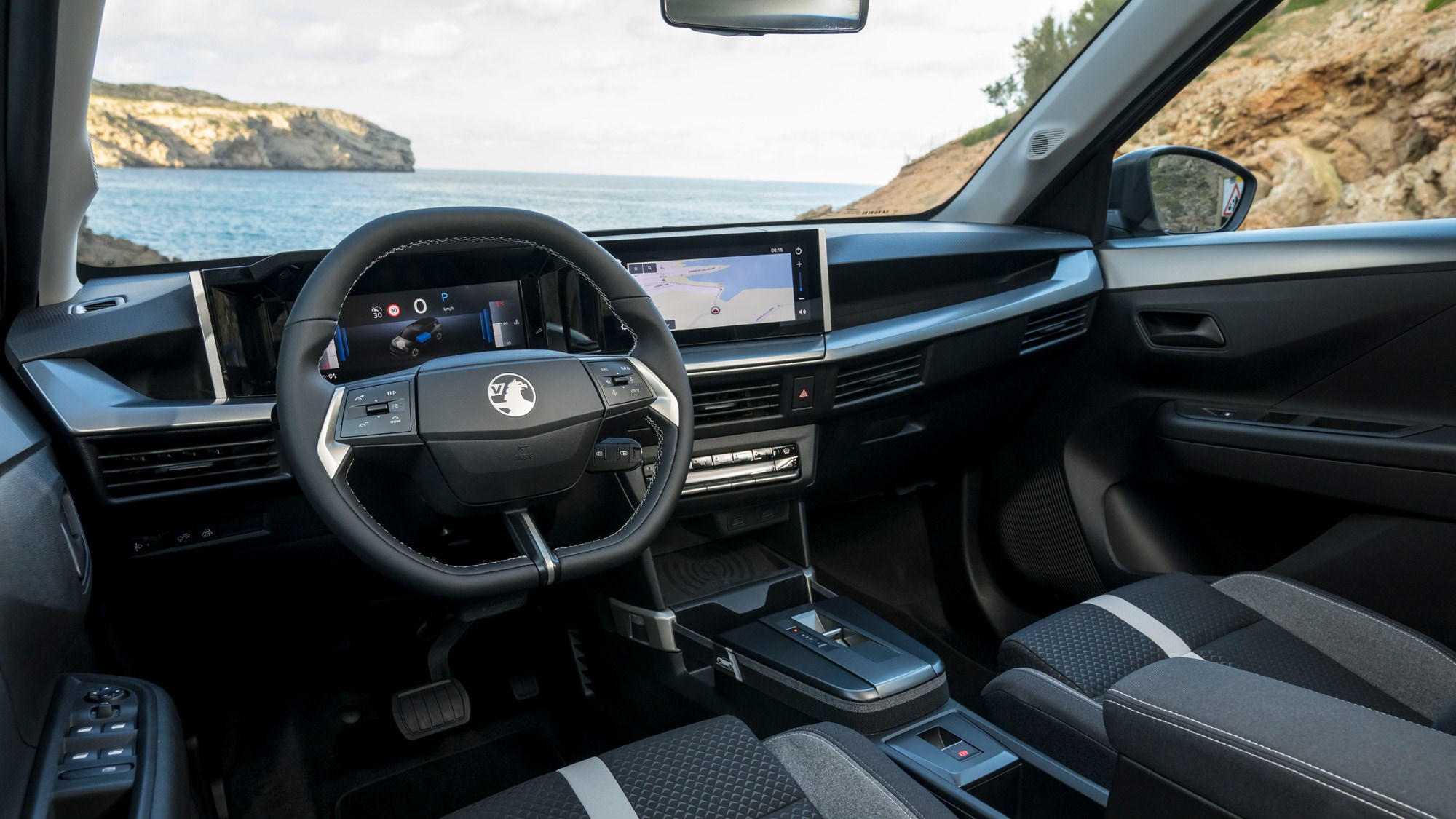
The 460-litre boot is also a decent size with a useful height-adjustable floor. With the rear seats folded, there’s 1,600 littres of room to play with. To give you an idea of its spaciousness, a Nissan Qashqai has only 1,447 litres. You can also have this mild-hybrid Frontera with an optional third row of seats for £500, which is unique to this class. Given Vauxhall didn’t have a single seven-seat model on the international launch for us to try, however, you can imagine it’s not a very spacious third row.
Before you buy (trims and rivals)
The downside of the Frontera EV and mild-hybrid model being priced the same at £23,495 means that the latter doesn’t have such a price advantage over its ICE rivals. It’s still a good price for a car of this size, but whereas the electric model has nothing that can compete for similar cash, there are cheaper rivals for this mild-hybrid model.
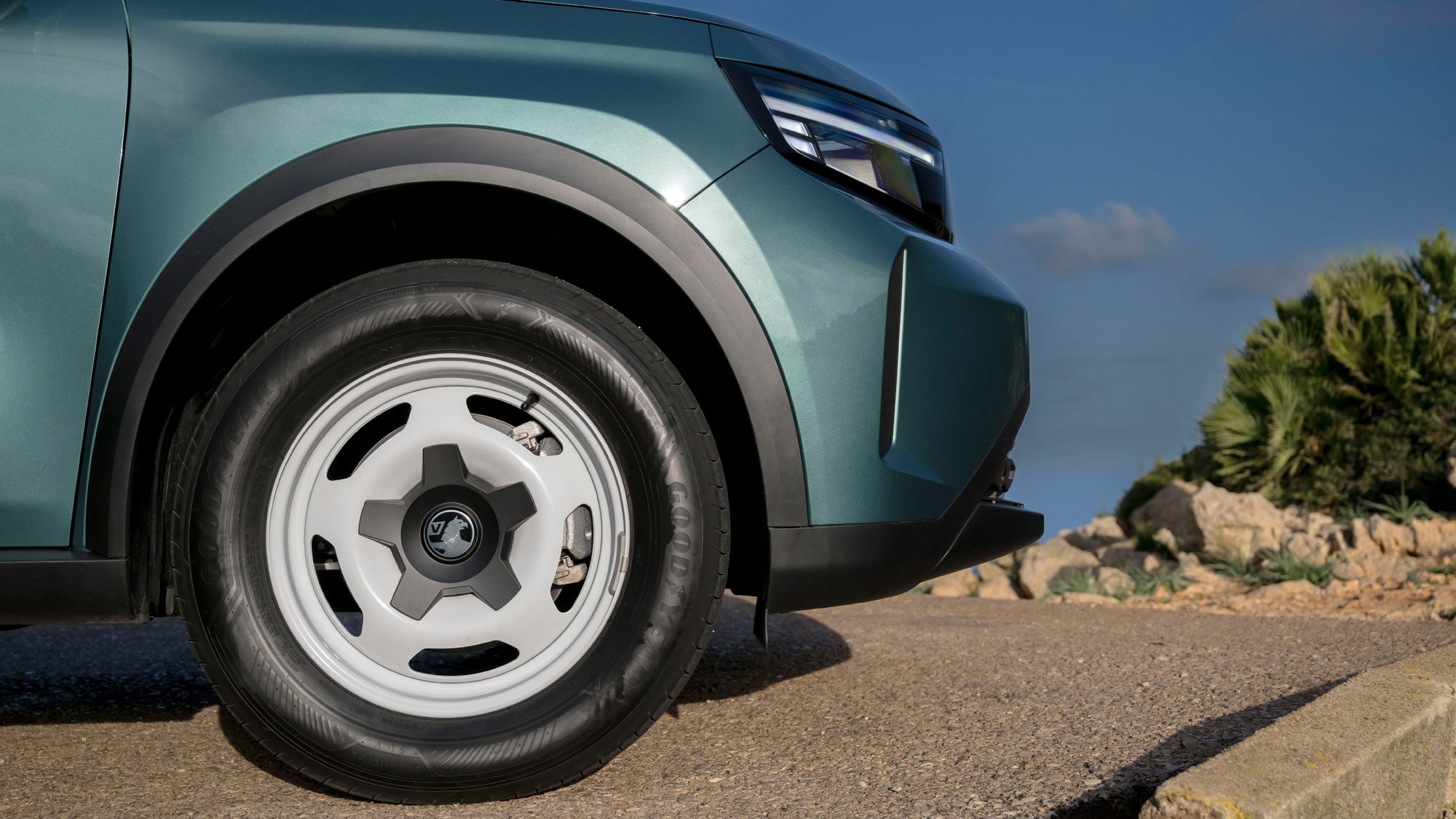
The MG ZS Hybrid is more powerful, more frugal and better finished than the Frontera, while the Dacia Duster has more of a 4×4 feel to it.
Standard equipment with the Vauxhall is generous, however, with a 10-inch touchscreen, a digital instrument cluster of the same size and wireless smartphone charging are all included for the price. The GS model then brings 17-inch alloy wheels (steelies are standard), climate control and blind spot monitoring for a £25,895 starting price. The more powerful 134bhp model also commands a £1,500 premium on top of that.
Verdict
The Vauxhall Frontera is a big step forward compared to the old Crossland. Better to drive, far more spacious and more in-keeping with the times. It’s an excellent small family car and available for a decent price, too.
But the electric Frontera is a better choice still. It’s more refined, cheaper to run and because it costs the same, price doesn’t need to a consideration. You should choose the best Frontera and that’s one powered by electric, rather than this lukewarm mild-hybrid system.